Introduction
The resurgence of ancient pagan beliefs and practices has become more prevalent in recent years as people search for spiritual fulfilment outside traditional monotheistic religions. One such revival is the neo-Ophite movement, which draws heavily from the Ophite, Bardaisanite, and Canaanite pagan traditions.
The ophites were a sect of early gnostics who revered the serpent as a symbol of wisdom and enlightenment, while Bardaisan was a Syriac gnostic who combined elements of Christianity and pagan beliefs. Canaanite paganism, on the other hand, was an ancient polytheistic religion that thrived in the Levant region before the spread of Christianity and Islam. Neo-Ophism is a modern reinterpretation of these ancient traditions, seeking to revive their spiritual wisdom and insights in a contemporary context.
The Theological Framework
Central to the Neo-Ophism movement is the belief in a divine cosmic order that transcends the limitations of the material world. This acosmic gnostic world-view rejects the dualistic notion of a perfect, transcendent God opposed to an evil material world, instead emphasizing the interconnectedness of all things within the divine realm. This understanding aligns with Ophite and Bardaisanite teachings, which emphasized the divine origin of creation and sought to transcend the binary oppositions between good and evil.
In the Neo-Ophite movement, the serpent is revered as a symbol of wisdom, knowledge, and spiritual transformation. The serpent, as depicted in ancient myths and scriptures, represents the divine spark within humanity that seeks to awaken and ascend to higher spiritual realms. This emphasis on the serpent as a symbol of enlightenment is a central aspect of Neo-Ophite theology, serving as a unifying motif that resonates with the Ophite and Canaanite pagan traditions.
Furthermore, Neo-Ophism incorporates elements of Canaanite paganism, which honoured a pantheon of deities representing different aspects of the natural world and human experience. This polytheistic framework recognizes the interconnectedness of all beings and the divine manifestations of the natural world. In this way, Neo-Ophism advocates for a holistic and animistic understanding of the divine, celebrating the sacredness of the earth and all living creatures. However, it also recognises the disease/darkness that infects the created cosmos through the mischievous works of the malign demiurge Yahweh.
In the realm of theological synthesis, a comprehensive examination unfolds, wherein the convergent tenets of Ophite, Bardaisanite, and Canaanite pagan belief systems are systematically interwoven to construct an innovative acosmic paradigm. This introduction into Neo-Ophism resides within the framework of the Left-hand Path, and endeavours to delineate the theoretical and theological underpinnings of this syncretic amalgamation.
Ophite Foundations:
The Ophite tradition, venerating the primordial serpent Ouroboros, establishes the conceptual groundwork for the present exploration. Anchored in the cyclical nature of creation and dissolution, Ophite teachings offer a philosophical lens through which adherents navigate the perpetual flux of cosmic forces. In the synthesized paradigm, the serpent emerges as an emblematic representation of transformative potential, guiding initiates through the labyrinthine journey of self-realization.
Bardaisanite Nuances:
Contributing to the nuanced fabric of this theological synthesis are the Bardaisanites, whose cosmological framework posits the cosmic narrative as a dynamic interplay between luminosity and obscurity. Embracing the Bardaisanite ethos, the synthesized belief system emphasizes the requisite reconciliation of opposing cosmic forces, fostering an intricate dialogue between radiant and shadowed facets of existence. The Bardaisanite cosmic equilibrium thus assumes a pivotal role, encouraging practitioners to harmonize internal dualities.
Neo-Ophism is considered a left-hand path spiritual tradition due to its embrace of esoteric, transformative, and individualistic practices that often challenge conventional norms and societal structures. The left-hand path typically encompasses spiritual approaches that prioritize personal empowerment, self-discovery, and the pursuit of individual enlightenment, even if diverging from mainstream or orthodox beliefs.
1. Emphasis on Personal Transformation: Neo-Ophites place a strong emphasis on the transformative journey of the individual seeker. It encourages the exploration of hidden truths, the pursuit of gnosis, and the shedding of societal or dogmatic constraints to facilitate personal evolution.
2. Esoteric Practices and Rituals: The left-hand path often involves esoteric practices that go beyond the boundaries of conventional religious or spiritual norms. Neo-Ophism incorporates rituals, communion rites, and symbolism inspired by Ophite traditions, which may be considered unconventional by mainstream standards.
3. Syncretic Approach: The left-hand path frequently involves a syncretic blending of diverse spiritual traditions. Neo-Ophism's syncretism, combining elements from Ophite Gnosticism, Canaanite paganism, and other esoteric sources, reflects a willingness to draw inspiration from various sources outside established norms.
4. Individual Autonomy: Left-hand path traditions emphasize individual autonomy and personal sovereignty. In Neo-Ophism, seekers are encouraged to forge their unique spiritual path, engaging with the serpent wisdom and Christos-Ophis archetype in a way that resonates with their personal experiences and insights.
5. Challenging Conventional Morality: The left-hand path often challenges conventional moralities and societal norms, encouraging seekers to explore beyond established boundaries to attain a deeper understanding of the self and the cosmos. Neo-Ophism's focus on hidden truths and the transformative power of the serpent may challenge traditional religious frameworks.
6. Transgressive Symbolism: Neo-Ophism may employ symbols and imagery that are transgressive or provocative within conventional religious contexts. The reinterpretation of biblical figures, such as Yahweh as a malevolent demiurge, challenges mainstream interpretations and reflects a willingness to explore alternative perspectives.
7. Integration of Light and Shadow: Left-hand path traditions often emphasize the integration of both light and shadow aspects of the self. Neo-Ophism's incorporation of the Christos-Ophis archetype, blending the light-bringing qualities with the serpentine transformative forces, reflects a holistic approach to spiritual evolution.
It's crucial to note that the term “left-hand path” is broad, and interpretations may vary. Neo-Ophism's alignment with the left-hand path does not necessarily imply malevolence or amorality, but rather underscores its commitment to individual empowerment, esoteric exploration, and the pursuit of spiritual enlightenment outside traditional frameworks.
Canaanite Paganism's Terrestrial Anchors:
From the pantheon of Canaanite deities emerges a rich tapestry rooted in the terrestrial landscapes of antiquity. The syncretic vision herein integrates Canaanite pagan beliefs, imbuing the spiritual practice with a profound immanence within the natural world.
The divine is both transcendent and immanent, which is identified in the shards of light encapsulated in the elements of the cosmos. Ritualistic practices, once oriented towards fertility and harvest, acquire a renewed significance as they intertwine with the overarching cosmic narrative.
In the realm of the Canaanite pantheon, each contributing unique attributes to the cosmic narrative. Understanding the roles of El, Asherah, Baal, Anat, Yam, and Mot is essential for an Ophite sorcerer on the quest for the hidden pearl and the sacred entrance to the bridal chamber.
1. El and Asherah— The First Emanations—The Divine Masculine and Feminine:
El stands as the chief deity in the Canaanite pantheon, embodying the qualities of wisdom, authority, and cosmic governance. As the first emanation, the androgynous one; El—Asherah serves as the overseer of the divine order, providing the Ophite sorcerer with a connection to the highest echelons of celestial authority. This unified emanation becomes a guiding force, directing the seeker towards the hidden mysteries of the cosmos. Asherah, represents the divine feminine principle within the Neo-Ophite cosmology. She is the nurturing and animating light, which is embedded within the entire cosmos, Asherah serves as a conduit for the Ophite sorcerer to tap into the fertile energies of creation. Her essence is invoked to harmonize the cosmic forces, allowing the seeker to attune to the cyclical rhythms of birth, death, and rebirth—a fundamental aspect of the Ophite journey.
3. Baal — The Storm Bringer:
Baal, a dynamic deity associated with storms and fertility, contributes a surge of transformative energy to the Ophite sorcerer's quest. As the storm-bringer, Baal symbolizes the untamed forces of nature. Invoking Baal aids the seeker in navigating the turbulent seas of existence, breaking through obstacles, and harnessing the raw power needed for profound spiritual transformation.
4. Anat — The Warrior Goddess:
Anat, the fierce warrior goddess and sister-consort of Baal, embodies strength, courage, and the warrior spirit. The Ophite sorcerer calls upon Anat's attributes to confront inner challenges and external oppositions on the path to the hidden pearl. Anat's martial prowess becomes a symbol of the strength required to face the abyss and emerge victorious in the spiritual battles of self-discovery.
5. Yam — The Primordial Sea:
Yam, the deity associated with the primordial waters, represents the chaotic and formless aspects of existence. Invoking Yam allows the Ophite sorcerer to delve into the depths of the unconscious mind, navigating the uncharted waters of the psyche. In these submerged realms, the seeker may discover hidden truths and encounter aspects of the self that need transformation.
6. Mot — The God of Death:
Mot, the god of death, embodies the inevitable cycle of mortality and immortality. In the Ophite tradition, Mot becomes an ally rather than an adversary. The sorcerer calls upon Mot's energies to facilitate the symbolic death of the ego, a necessary step toward the realization of the hidden pearl. Embracing the transformative power of Mot allows the seeker to navigate the underworld of the self and emerge reborn.
The Quest for the Hidden Pearl and the Bridal Chamber:
As the Ophite acolyte engages in rituals and invocations, these Canaanite deities collectively guide the seeker through the multifaceted journey toward the hidden pearl—the symbolic core of divine wisdom. The bridal chamber, representing the ultimate union with the divine, becomes the culmination of the seeker's quest.
El's wisdom, Asherah's nurturing embrace, Baal's transformative energy, Anat's courage, Yam's exploration of the subconscious, and Mot's symbolic death converge in a cosmic dance orchestrated by the Ophite practitioner. Through this intricate interplay, the seeker unveils the hidden pearl, transcending the veils of illusion, and enters the sacred bridal chamber—a symbolic return to the divine unity from which all creation emanates.
Acosmic Principals within the Left-hand Path:
Central to this syncretic theology is the concept of the Acosmic—a dimension transcending conventional cosmic paradigms. Adherents of the Left-hand Path engage in a deliberate exploration of realms beyond conventional reality, unrestrained by cosmic limitations. The cosmic void is reconceptualized as a reservoir of latent potential awaiting the alchemical transmutation of the seeker.
Yahweh: The Evil Demiurge and the Planetary Archons
1. Yahweh as the Demiurge:
In Gnostic thought, the term “demiurge” refers to a subordinate, imperfect deity responsible for creating the material world. Some Gnostic sects posit that Yahweh, the god of the Old Testament, is the demiurge who fashioned the physical universe. According to this perspective, the demiurge is considered ignorant or malevolent because it keeps people in a captive state of ignorance, limiting their connection to the higher, spiritual realms.
2. Archons as Planetary Rulers:
The archons are often depicted as cosmic rulers or forces associated with planetary spheres, overseeing different aspects of the material world. In some Gnostic traditions, they are considered agents of the demiurge, responsible for maintaining the illusion of reality and perpetuating spiritual ignorance. These archons, often considered planetary entities, act as wardens that keep human souls bound to the curse of this flawed material plane
3. Spiritual Captivity and Ignorance:
According to Gnostic teachings, the material world created by the demiurge is considered inherently flawed and impure. Human souls, sparks of the divine, become ensnared in physical bodies and subjected to the cycle of birth and death. The archons, as cosmic rulers, enforce this state of spiritual captivity by deceiving souls into identifying solely with the material realm, fostering ignorance of their true, divine nature.
4. Liberation and Gnosis:
Gnostic salvation involves transcending the influence of the demiurge and the archons through spiritual awakening, or gnosis. Gnosis refers to direct, experiential knowledge of the divine, enabling the soul to liberate itself from the constraints of the material world and reconnect with the higher, spiritual reality. The pursuit of gnosis often involves introspection, mystical experiences, and esoteric knowledge that lead to self-realization and enlightenment.
5. Cosmic Battle:
The final cosmic battle unfolds between the forces of the true, transcendent God and the demiurge and his archons. The goal is to overcome the influence of the archons, liberate the divine spark within, which will then ascend to the bridal chamber. The eschatological end will result in a cosmic purification that will result in a renewed and perfected created cosmos that is no longer under the oppressive and poisonous grasp of Yahweh and his archons. This final act is the merging of the transcendent with the material cosmos (the realized kingdom of God on earth), which is identified in the prophetic words uttered by Paul when he stated that God will be All in All. (1 Corinthians 15:28)
Jesus— Christos-Ophis
Jesus as the Light bringer:
In the context of Neo-Ophism and esoteric Christianity, Jesus is considered as the Light bringer, embodying divine wisdom and enlightenment. This concept draws parallels with various mythical and religious figures associated with bringing illumination or knowledge to humanity.
Divine Illumination: Jesus, in this interpretation, is considered the embodiment of divine illumination. His teachings are identified as a source of spiritual light that dispels the darkness of ignorance, guiding seekers towards gnosis, or direct experiential knowledge of the divine.
Symbolic Resonance with Light: The image of Jesus as the Light bringer aligns with traditional Christian imagery, where Jesus is often portrayed surrounded by a radiant aura, symbolizing his divine nature and the spiritual light he brings to the world.
Jesus and the Cosmic Serpent:
The association of Jesus with the cosmic serpent draws from Gnostic themes and archetypal symbolism. The serpent, often a symbol of wisdom, transformation, and cyclic existence, is reinterpreted in this context to represent the spiritual journey and the transformative power inherent in Jesus' teachings.
Serpent Wisdom and Transcendence: In Gnostic thought, the serpent is a symbol of wisdom that leads to transcendence. Jesus, as the cosmic serpent, is the guiding light, that compels the ophite sorcerer through the twists and turns of the spiritual journey, facilitating the shedding of the old and the emergence of a renewed, enlightened self.
Cycles of Existence and Resurrection: The serpent, with its ability to shed its skin and renew itself, becomes a symbol of resurrection and rebirth. In the context of Jesus as the cosmic serpent, this symbolism aligns with the Christian concept of resurrection and eternal life through belief in Christ.
Archetypal Harmony:
The merging of Jesus as the Light bringer and the cosmic serpent seeks to harmonize archetypal themes found in various religious and mystical traditions. It emphasizes Jesus' role not only as a historical figure, but as an archetypal symbol that transcends cultural and religious boundaries.
Spiritual Transformation:
The overarching theme in these interpretations is one of spiritual transformation and enlightenment. Jesus, as the Light bringer and cosmic serpent, symbolizes the journey from spiritual darkness to illumination, from ignorance to gnosis, and from mortality to spiritual rebirth.
It's crucial to recognize that these interpretations are esoteric. They reflect a synthesis of Gnostic and mystical themes, seeking to uncover deeper layers of meaning within the Christian narrative. Individuals interested in these perspectives often engage in contemplative practices, rituals, and esoteric studies to explore the profound symbolism associated with Jesus as the Light bringer and cosmic serpent.
The incarnation is an important aspect of the Neo-Ophite soteriology, for it is through the descent of Christ and his ascension that all creation is redeemed. This redeeming effect aids in recognizing the beauty of the created order, whilst also acknowledging the disease that is inter-mixed with the light of this fallen cosmos.
When Christ ascends above the god of the air, and every power, authority, and principality; Christos-Ophis becomes Lord of All. And thus, as Paul clearly states, when everything is subjected to Christ, then Christ will subject everything unto the Father, and God will be All in All. This is the final destruction of all duality and will return all things to the Divine Unity
Ritualistic Manifestations:
In the syncretic tradition, ceremonial practices seamlessly amalgamate Ophite serpent rites, Bardaisanite celestial invocations, and Canaanite earth-centric rituals. Sacred serpentine symbolism intertwines with celestial motifs, and the rhythmic cadence of earth-entered chants resonates harmoniously with cosmic frequencies. Initiates are led through meditative processes, facilitating profound introspection and communion with the cosmic essence.
Rituals and Practices
The revival of neo-Ophism also entails the recovery of ancient rituals and practices that honour the divine through sacred ceremonies, ecstatic dance, and reverential offerings to the deities. These rituals aim to create a symbiotic relationship between the human and divine realms, fostering a sense of spiritual communion and reverence for the interconnectedness of all things.
As part of the revival, neo-Ophism seeks to reclaim the wisdom of ancient gnostic texts, such as the Apocryphon of John and the Gospel of the Egyptians, as well as the writings of Bardaisan and other gnostic sages. Through the study and interpretation of these texts, the movement aims to rediscover the spiritual insights and mystical teachings that have been marginalized or suppressed throughout history.
The Communion Rites within Neo-Ophite Christology draw inspiration from historical Ophite practices, infusing them with symbolic depth and transformative significance. These rites serve as a sacred enactment of the seeker's participation in the cosmic drama of enlightenment, aligning with the principles of Christos-Ophis as the Light Bringer.
1. Sacred Libation:
In homage to the Ophite tradition's reverence for the serpent, a sacred libation is offered—symbolizing the primal, transformative energies associated with the serpent. Participants partake in a communal act of pouring a symbolic libation, acknowledging the cosmic forces that guide and empower their spiritual journey.
2. Serpentine Dance:
Emulating the serpent's sinuous movements, the participants engage in a serpentine dance. This dynamic and ritualistic dance serves as a symbolic expression of the cosmic forces at play, embodying the undulating energies of transformation and awakening. The dance becomes a living meditation, inviting participants to attune themselves to the rhythms of the divine.
3. Symbolic Descent:
Drawing from historical Ophite themes, the Communion Rites may incorporate a symbolic descent into the underworld. Participants, through guided meditation or ritual drama, journey into the depths of the material realm, confronting aspects of the self that require transformation. This descent mirrors the archetype of Christos-Ophis navigating the challenges of mortality and ignorance.
4. Emanation of Wisdom:
During the communion, a symbolic emanation of wisdom is shared among participants. This can take the form of sacred texts, teachings, or symbolic elements that represent the hidden pearls of gnosis. The act of sharing these insights reinforces the communal nature of the spiritual journey and serves as a reminder of the collective pursuit of enlightenment.
5. Symbolic Elements:
Historical Ophite practices often involved the use of symbolic elements, such as serpentine imagery, sacred oils, and anointing rituals. Participants may engage in anointing themselves with oils representing the transformative energies of the serpent, reinforcing the idea of spiritual purification and consecration.
6. Communion of Unity:
The Communion Rites culminate in a shared sacrament, representing the unity of the participants with Christos-Ophis and the divine source. Symbolic elements such as bread and wine may be used, each carrying profound significance. The bread symbolizes the material aspect of existence, and the wine represents the divine essence. As participants partake, they symbolically integrate the dualities within themselves, uniting the material and the divine.
7. Sacred Words and Invocations:
Echoing historical Ophite practices, sacred words and invocations may be spoken during the Communion Rites. These words serve as vibrational keys, unlocking deeper layers of consciousness and inviting the presence of the divine serpent wisdom into the sacred space.
In the Neo-Ophite Communion Rites, historical practices are reimagined and adapted, offering participants a transformative experience that aligns with the symbolic journey of Christos-Ophis; the Light Bringer who guides seekers towards the hidden pearls of wisdom and the sacred bridal chamber of divine union.
Revered Symbols:
1. The Serpent (Ouroboros): A universal symbol of cyclicality, transformation, and eternity, the Ouroboros represents the Ophite's journey of continuous self-discovery and renewal.
2. The Pearl: Symbolizing hidden wisdom, the pearl is a central metaphor in the Ophite tradition. It represents the ultimate goal of the sorcerer's quest – the revelation of divine truths obscured by the material world.
3. The Labyrinth: Depicting the winding and often challenging journey of self-discovery, the labyrinth is a powerful symbol for the Neo-Ophite sorcerer's path. It represents the twists and turns of the psyche and the quest for inner enlightenment.
4. Sacred Union Symbol: Reflecting the divine marriage or sacred union, this symbol signifies the harmonious integration of opposing forces within the self—a central theme in the Neo-Ophite's spiritual quest.
5. Triquetral: A triple knot symbolizing the interconnectedness of mind, body, and spirit. The Neo-Ophite seeks to balance these elements in the pursuit of higher consciousness.
6. Mystical Eye: Representing heightened perception and spiritual insight, the mystical eye symbolizes the Ophite sorcerer's awakening to hidden truths and the transcendent aspects of reality.
7. Waves and Storms: Symbols of the primordial forces, represented by deities like Yam and Baal. They embody the chaotic energies harnessed by the sorcerer for transformative purposes.
8. Tree of Life: A universal symbol in many esoteric traditions, the Tree of Life represents the interconnectedness of all existence and the Ophite's journey to reach the highest branches—symbolizing spiritual enlightenment.
The Ugaritic alphabet can be used as a spiritual tool to aid in one’s release from captivity. Here are some examples;
1. Aleph (𐎀):
Symbolic Meaning: Aleph represents the cosmic unity and the source of all creation. In the Neo-Ophite tradition, Aleph embodies the undivided and ineffable essence from which the serpent wisdom emanates.
2. Beth (𐎁):
Symbolic Meaning: Beth signifies the inner house or temple. In the Neo-Ophite context, Beth represents the sacred space within the seeker—the inner sanctuary where spiritual transformation and communion with divine wisdom occur.
3. Himel (𐎂):
Symbolic Meaning: Himel symbolizes the journey and movement. In the Neo-Ophite tradition, Himel represents the seeker's path toward gnosis, mirroring the undulating movements of the serpent on the cosmic journey.
4. Daleth (𐎃):
Symbolic Meaning: Daleth signifies the door or portal. In the Neo-Ophite context, Daleth represents the threshold of enlightenment, the gateway through which the seeker transcends the material world and enters the mystical realms.
5. He (𐎄):
Symbolic Meaning: He represents the breath and life force. In Neo-Ophite tradition, He signifies the divine breath that animates all existence, inviting seekers to attune themselves to the divine breath within and around them.
6. Waw (𐎅):
Symbolic Meaning: Waw symbolizes connection and union. In the Neo-Ophite context, Waw represents the intertwining forces of duality—the union of opposites that leads to spiritual integration.
7. Zayin (𐎆):
Symbolic Meaning: Zayin signifies the weapon or tool. In Neo-Ophite tradition, Zayin represents the transformative power of spiritual tools, such as meditation, ritual, and contemplation, employed by the seeker on the path of enlightenment.
8. Heth (𐎇):
Symbolic Meaning: Heth represents a fence or boundary. In Neo-Ophite tradition, Heth symbolizes the necessary boundaries and discernment on the spiritual journey—a reminder to navigate the path with intention and awareness.
9. Teth (𐎈):
Symbolic Meaning: Teth represents a serpent or serpent coiling. In the Neo-Ophite context, Teth embodies the serpent wisdom—a symbol of transformative energy, shedding the old and embracing the new.
10. Yod (𐎉):
Symbolic Meaning: Yod signifies the hand or creative power. In Neo-Ophite tradition, Yod represents the creative and transformative power inherent in the seeker's spiritual practices, symbolized by the serpent's movement.
These letters can also be combined to create powerful meditative symbols drawing on the primordial powers of the Canaanite pantheon, which can help in destroying the false self and preparing oneself to be united with the Divine Unity. Ascending to the Pleroma is not an easy task, one will meet the planetary archons and the demiurge himself. The enlightened sorcerer will be tested by these malign powers before finally entering the bridal chamber.
Conclusion
In the culmination of our exploration into the Neo-Ophite path, we encounter a spiritual journey that intertwines ancient wisdom, esoteric insights, and individual empowerment. Neo-Ophism emerges as a syncretic, left-hand path tradition that beckons seekers to delve into the depths of hidden truths, traverse the labyrinth of self-discovery, and ultimately bask in the radiant light of the divine wisdom symbolized by the hidden pearl.
Key Realizations in the Neo-Ophite Path:
1. Serpent Wisdom and Transformation: At the core of Neo-Ophism lies the recognition of serpent wisdom as a transformative force. The serpent, symbolizing cyclic existence and spiritual renewal, becomes the guide for seekers navigating the twists and turns of their own spiritual evolution.
2. Christos-Ophis as an Archetypal Guide: The archetype of Christos-Ophis emerges as a dynamic synthesis, blending the light-bringing qualities of the historical Christ Jesus, with the transformative forces symbolized by the serpent. Christos-Ophis becomes the archetypal guide, leading individuals towards the sacred bridal chamber of self-realization and divine unity.
3. Gnosis and Communion Rites: Neo-Ophism places great importance on gnosis, the direct experiential knowledge of the divine. Communion rites, inspired by historical Ophite practices, serve as sacred enactments, inviting participants to engage in a transformative cosmic drama that mirrors the archetypal journey towards enlightenment.
4. Syncretism and Adaptability: The strength of Neo-Ophism lies in its syncretic approach, weaving together threads from Ophite Gnosticism, Canaanite pagan traditions, and other esoteric sources. This adaptability allows Neo-Ophism to resonate with contemporary seekers, offering a dynamic and inclusive spiritual framework.
5. Left-Hand Path Empowerment: Positioned within the left-hand path tradition, Neo-Ophism encourages personal autonomy, esoteric exploration, and the challenging of conventional norms. The left-hand path principles align with the individual empowerment sought within Neo-Ophism, where seekers forge their unique spiritual journeys.
6. The Quest for the Hidden Pearl: The Neo-Ophite path is characterized by the relentless quest for the hidden pearl—an emblem of profound truths obscured by the material world. Seekers engage in rituals, esoteric practices, and symbolic acts, unravelling the layers of illusion to reveal the divine wisdom concealed within.
A Dynamic and Inclusive Spiritual Landscape:
As Neo-Ophism continues to evolve, it invites seekers to traverse a dynamic and inclusive spiritual landscape. The journey is not bound by dogma but is a creative and intuitive exploration of cosmic forces, symbolic archetypes, and the intertwining energies of light and serpentine wisdom.
In the sacred dance of serpentine energies, seekers within Neo-Ophism discover a path that harmonizes the ancient with the contemporary, the light with the shadow, and the individual with the cosmic. It is an invitation to stand at the crossroads of traditions, challenging assumptions, embracing diversity, and unveiling the hidden pearls of wisdom that lead to the sacred bridal chamber—a space of divine union and transcendent understanding. In this concluding vision, Neo-Ophism beckons those who seek to illuminate their path, guided by the serpentine currents of transformation and the timeless light that shines from the hidden pearl.
As we conclude our exploration of the foundational aspects of Neo-Ophism, we stand at the threshold of a new and intriguing journey. The upcoming Substack series will delve deep into the pantheon of deities within Neo-Ophism, unraveling their mystical roles, symbolic significance, and the cosmic dance they perform in the spiritual landscape of this syncretic tradition.
Our focus on the deities will offer a nuanced understanding of how these divine beings intertwine with the archetypal forces of the serpent, the Light bringer, and the hidden pearls of wisdom. Each deity within the Neo-Ophite pantheon plays a unique role in guiding seekers on their transformative journey, providing insights into the complexities of existence and the cosmic forces at play.
Throughout the series, we will explore the esoteric nuances of deities such as El, Asherah, Baal, Anatu, Yam, Mot, and others within the Canaanite pantheon. Understanding their roles within the Neo-Ophite cosmology will shed light on the spiritual currents that influence the seeker's path, providing a deep well of primordial energies to draw inspiration from.
As we embark on this next chapter, the aim is not only to unveil the divine characters within Neo-Ophism but also to examine how their myths, symbols, and attributes contribute to the broader narrative of spiritual evolution. Each deity becomes a cosmic actor, guiding seekers through the labyrinth of self-discovery and unveiling the hidden pearls of gnosis.
Prepare to immerse yourself in the mystique of Neo-Ophite deities as we unravel the sacred stories, symbols, and practices associated with each divine presence. The upcoming exploration promises to be a captivating journey into the heart of the pantheon, where the divine dance of archetypal forces invites us to contemplate the profound mysteries of Neo-Ophism and its transformative power.

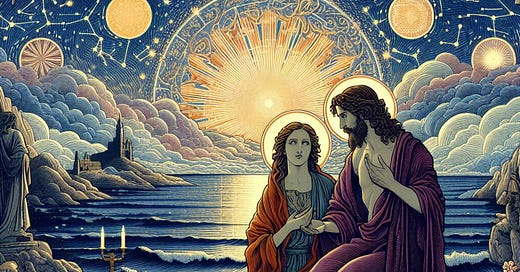



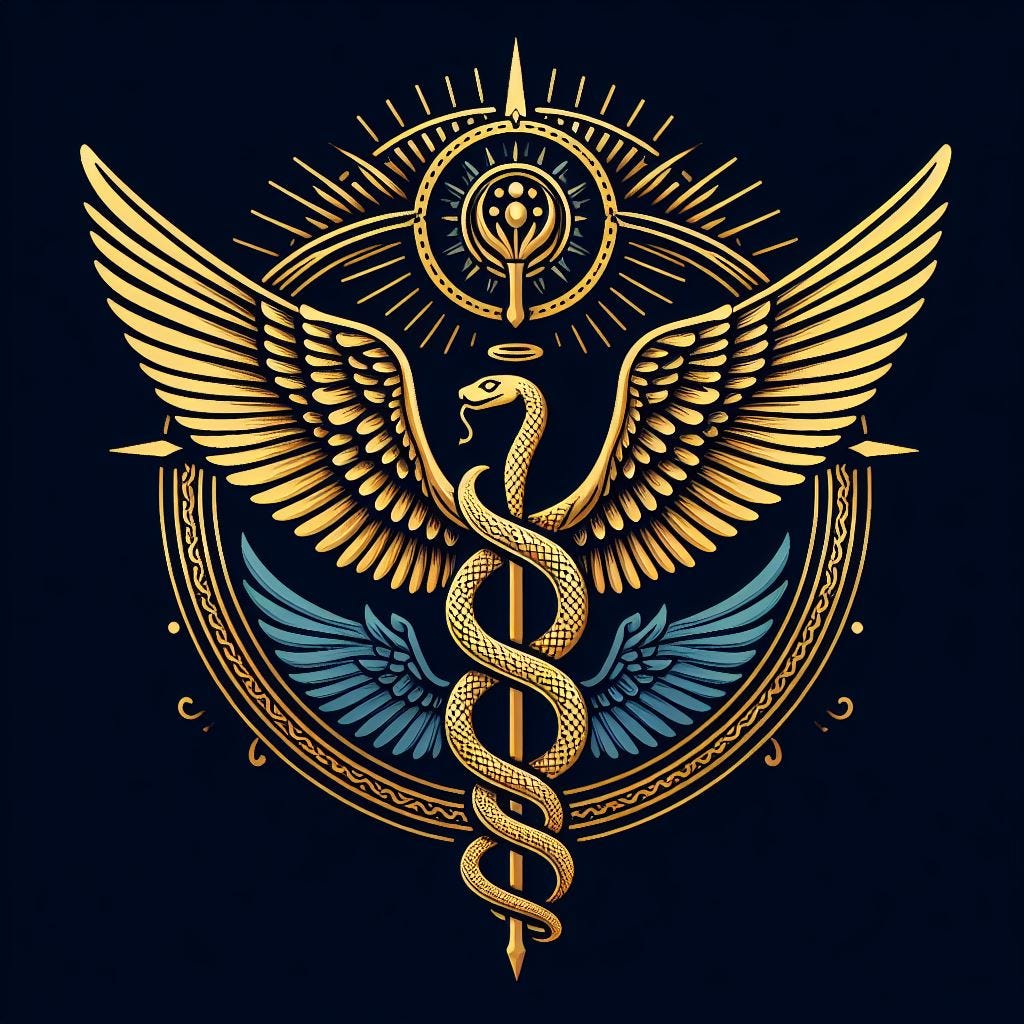
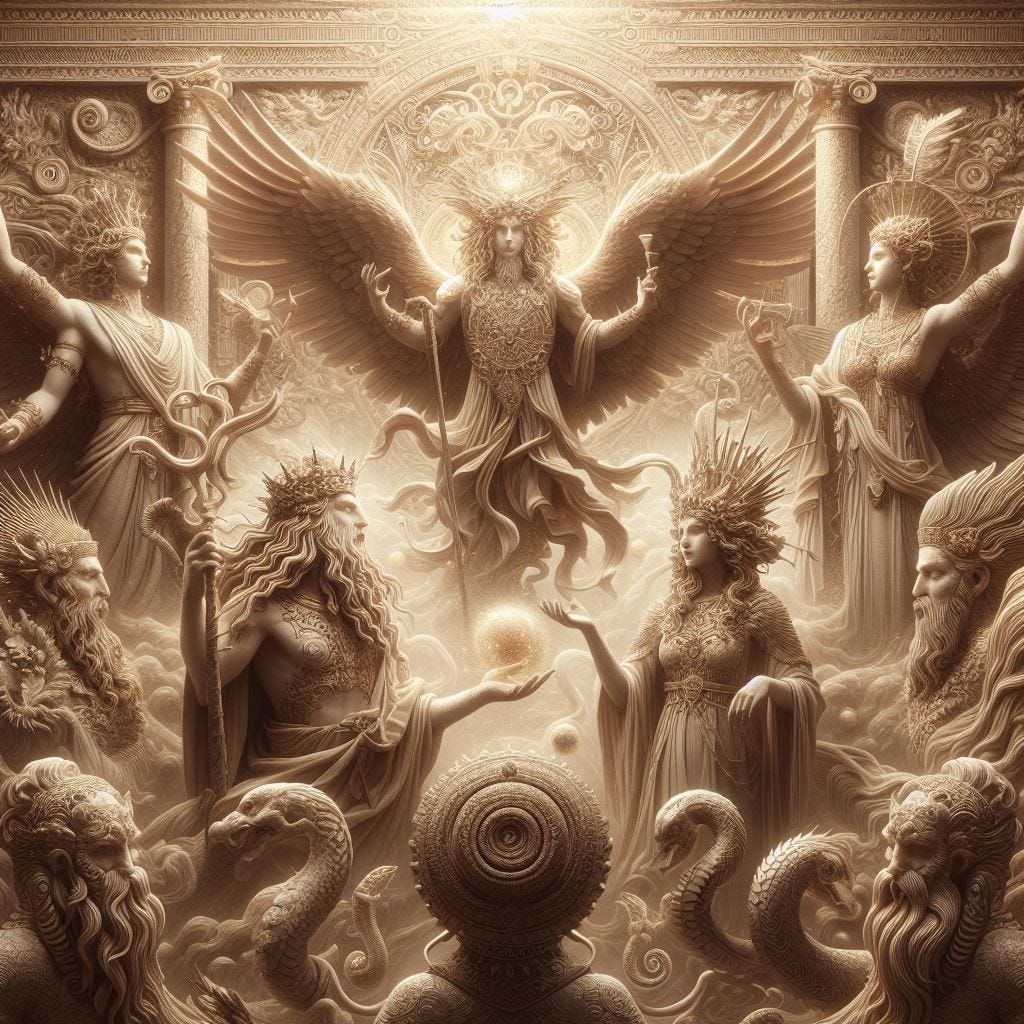
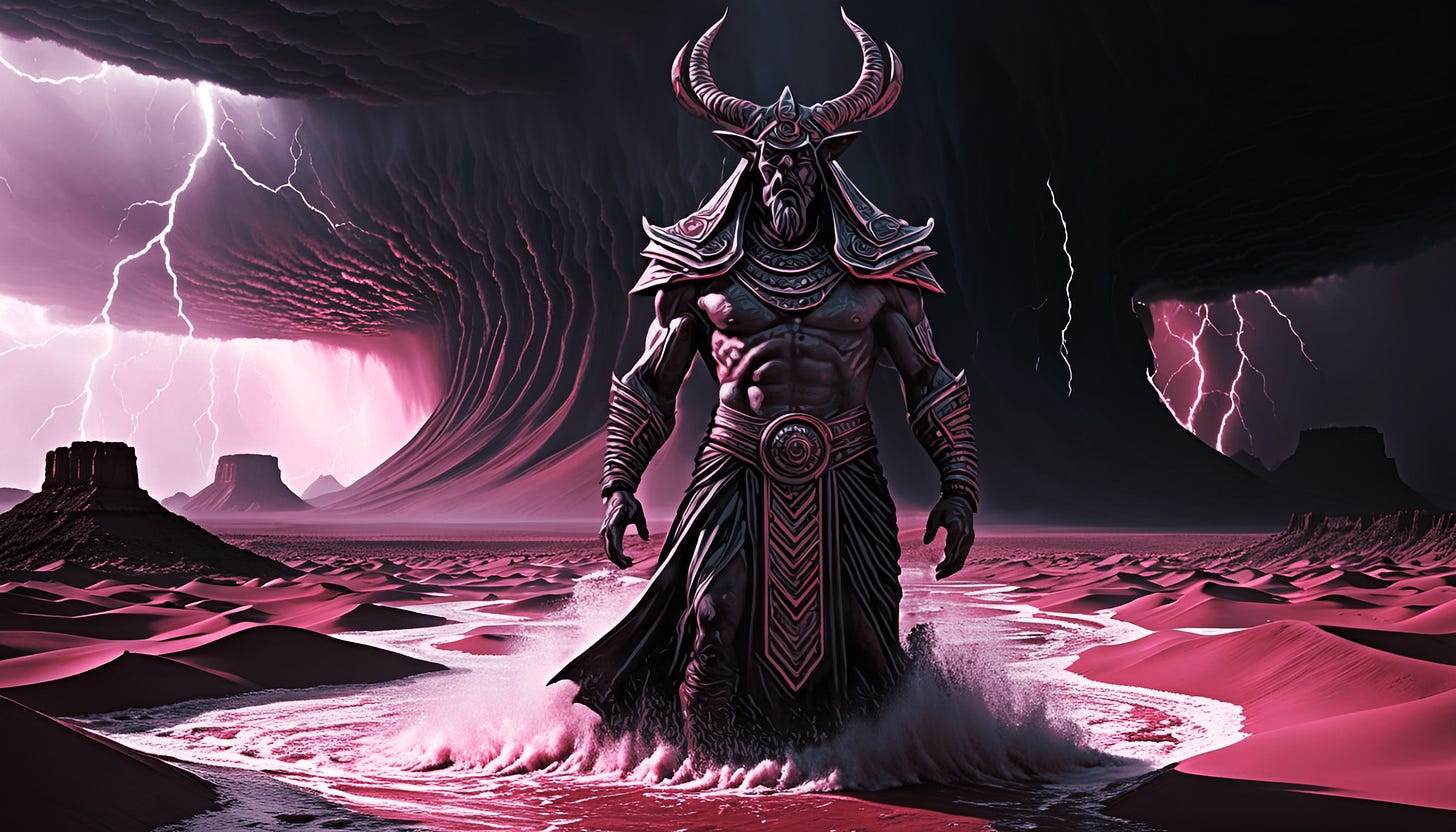
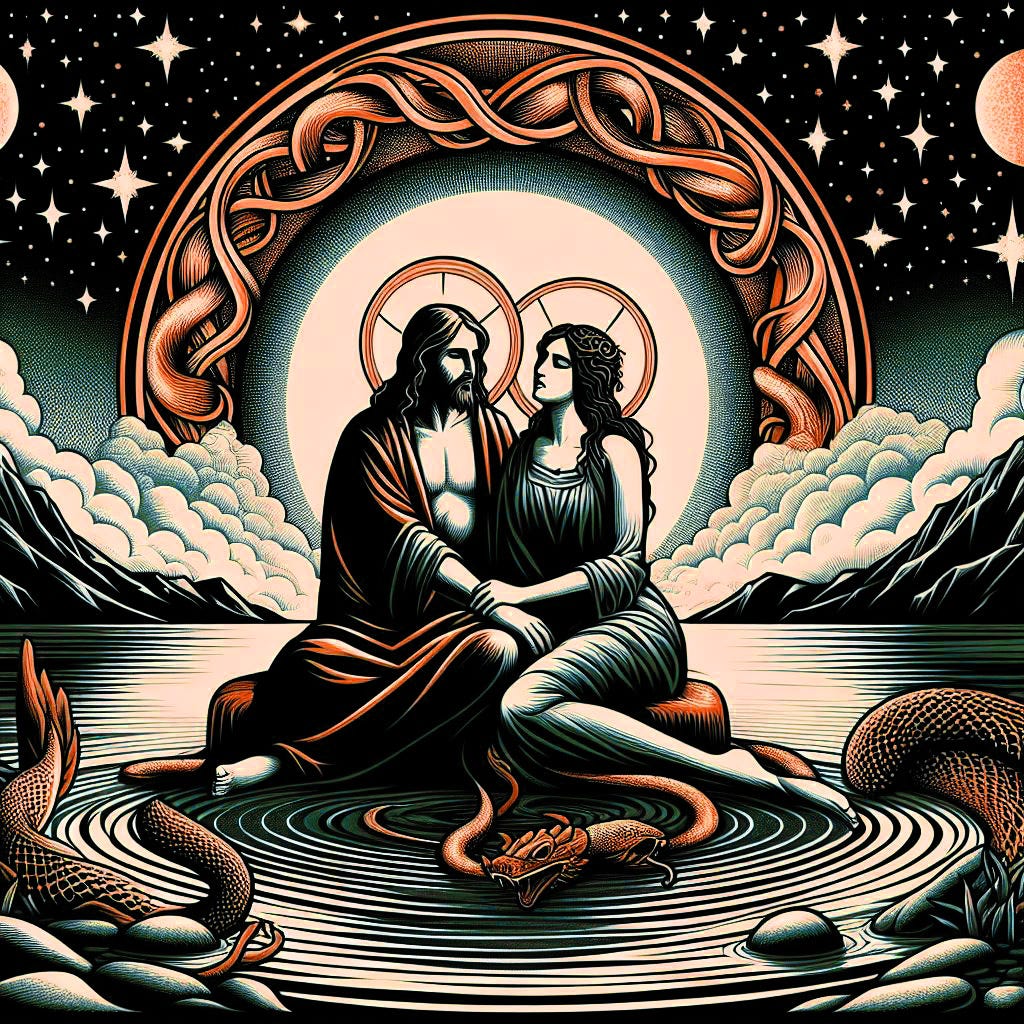
Incredible research! I was sucked into the OTO during my pagan life and it was a tangled mess of ever evolving self righteousness. When I stood back with a lens of Christ for the first, all of these spaghetti tendrils of gnosis are just a writhing agony of a fallen world.
The Ophites saw the war between the NT and the OT. Mat 10:35
They went beyond Marcion.
The NT makes more sense if we use the Ophite framework